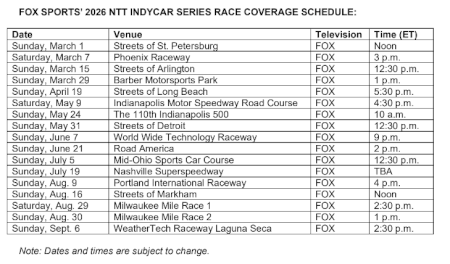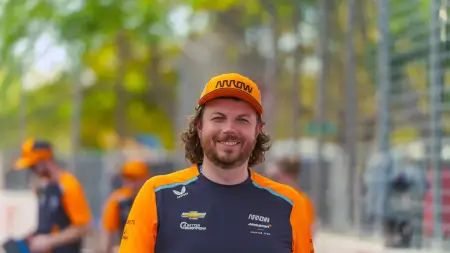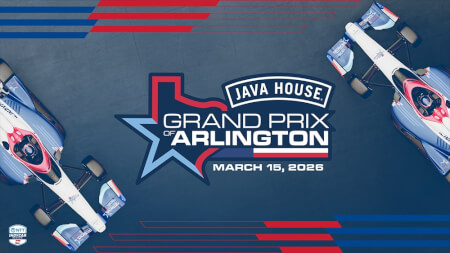May 16th 2024
IndyCar Series makes aerodynamic specification changes for Indy 500
The IndyCar Series has made a few changes to the aerodynamic specification of its cars and a couple of mechanical updates for the 108th running of the Indianapolis 500.
The largest involves an increase in potential downforce with the rear wing. Teams were restricted to a maximum nose-down angle of five degrees at the 2023 race and have been given an additional four degrees of inclination to use with the new 2024 limit of nine degrees.
Teams are allowed to continue using three Gurney flaps of varying widths atop the rear wing, with 13.2 inches, 24.5 inches, and a full-span Gurney at their disposal; all are 3/8th of an inch tall. With the former limit of five degrees, teams made use of the wider Gurneys to produce more downforce, but it came with a noticeable reduction in top speed. By allowing a greater wing angle range of up to nine degrees, a better compromise of downforce and top speed is made possible.
“A lot of teams will put the small Gurney on first because it’s a small and pretty efficient piece,” Arrow McLaren technical director Nick Snyder told RACER. “But as you go to bigger Gurneys, it gets less and less efficient, so there’s a trade-off in there somewhere. And each team is going to have their own wind tunnel data of when they start adding more angle or when they put the bigger Gurney on.
“A lot of teams will put the small Gurney on first because it’s a small and pretty efficient piece,” Arrow McLaren technical director Nick Snyder told RACER. “But as you go to bigger Gurneys, it gets less and less efficient, so there’s a trade-off in there somewhere. And each team is going to have their own wind tunnel data of when they start adding more angle or when they put the bigger Gurney on.
“If it’s a cool race, then you probably won’t see anybody putting a Gurney up there because you’re gonna have nice dense air. But if it’s a hot, sticky race day and track temps are 120 degrees, you’re gonna see guys pile on the downforce; probably a mix of who does a big Gurney versus who does more wing angle.”
The series has also removed the option of using the trimmed sidewalls at the exit of the diffusers — next to the inside of the rear tires–to reduce rear downforce and drag; full-length sidewalls are required. IndyCar has also deleted the use of Gurneys from the trailing edge of the underwing flaps.
Up front, the use of two miniature barge boards at the leading edge of the underwing has been altered; the inner barge boards are now unapproved, leaving race engineers the single outer barge board to install on the left and right side of the underwing to add downforce.
All of the newly prohibited items were rarely used, and as Snyder sees it, the changes were done to help IndyCar teams save money within their Speedway development budgets.
“I think that was a lot of the motivation,” he said. “As soon as you change anything around the floor of the car, you have to go map the car, you have to run through an entire right height map. Whether you are doing it in a wind tunnel, doing it with CFD (computational fluid dynamic software) or doing a straight-line test, every aero combination just adds a ton of runs you have to do they get the data.
“So if there’s parts nobody’s running and IndyCar takes those parts and makes them not permitted anymore, it actually saves us money by reducing the amount of testing and the amount of resources we have to put into it. The trimmed sidewalls was a desperation piece almost nobody really ran last year. I think a couple of cars dabbled with those inner barge boards, but nobody is embracing those. So they just took away pieces that nobody was using.”
On the mechanical side, stronger new rear suspension uprights were introduced at the rain-shortened Indy Open Test in April and are installed on every car in response to the rear upright failure that occurred last May when Kyle Kirkwood’s car was hit by the crashing car of Felix Rosenqvist. Stronger retaining rings for the wheel bearings are part of the upright revisions as well.
The new rear uprights also feature a change in how the rear tethers, which are designed to keep broken suspension attached to the chassis, are affixed. Previously, the tethers were mounted to the studs that hold the rear brake calipers in place, but with Dallara’s upright redesign, the tethers bolt directly to the rear uprights.
A number of changes to the Speedway rear wing mounting system complete the alterations for 2024; all have been done to improve energy absorption and distribution in a rearward impact.
A number of changes to the Speedway rear wing mounting system complete the alterations for 2024; all have been done to improve energy absorption and distribution in a rearward impact.
A new front mounting clevis has been designed to spread impact loads more evenly through the attenuator, and at the rear, new bolts/studs for the wing mount have been installed that have a lower threshold to break before the wing and attenuator compress as a unit. Finally, the x-brace used to strengthen the Speedway wing mounting and adjusting system has been removed.
The combination of changes being done reduce the amount of damage the wing mounting system does to the attenuator on its own in a crash, and thereby allow the attenuator to better perform its job in isolation.
For more information: www.racer.com
For more Industry News, please Click Here
For more information: www.racer.com
For more Industry News, please Click Here













